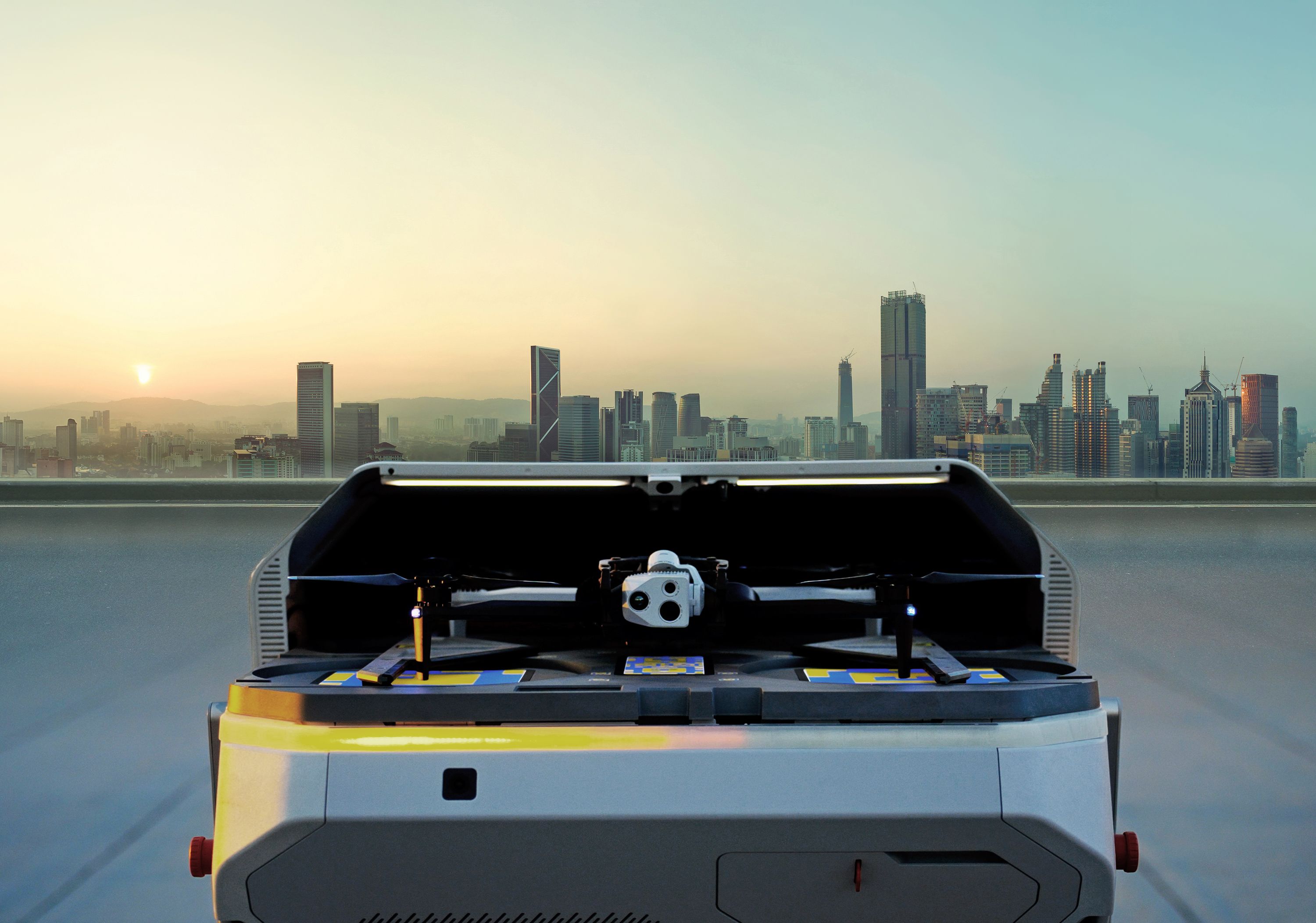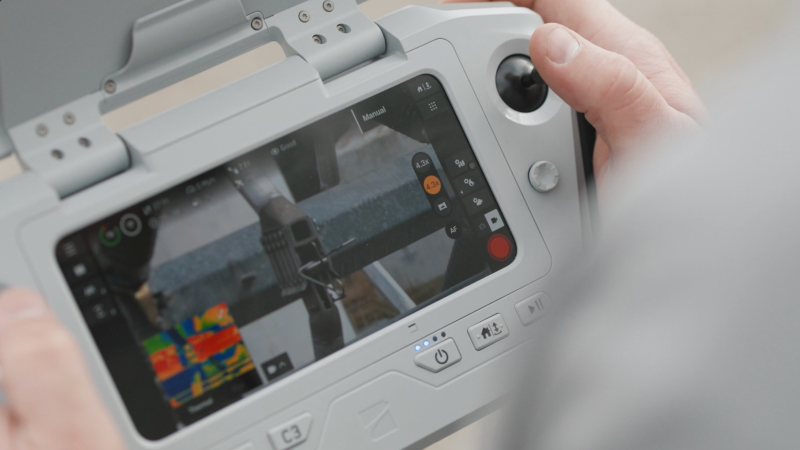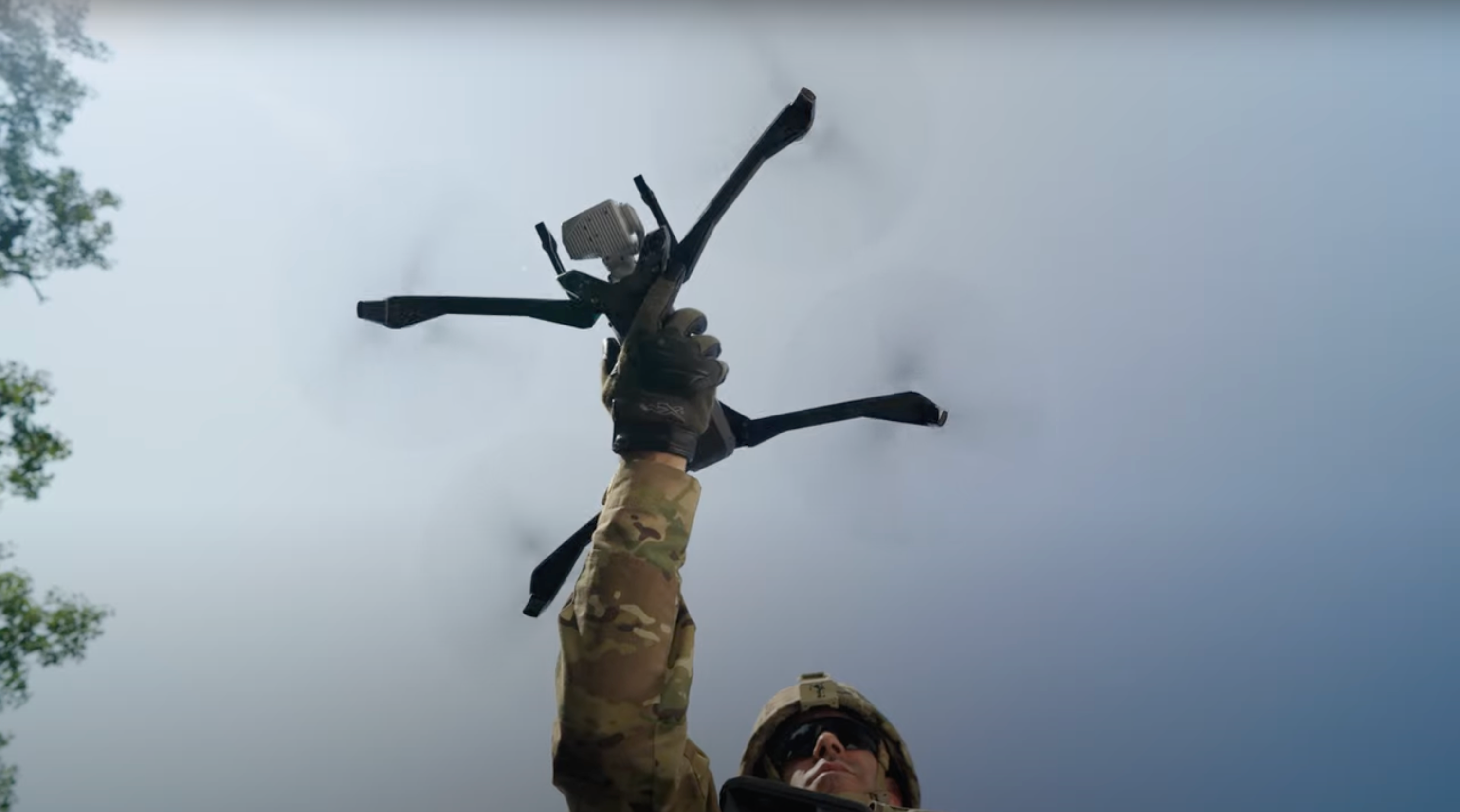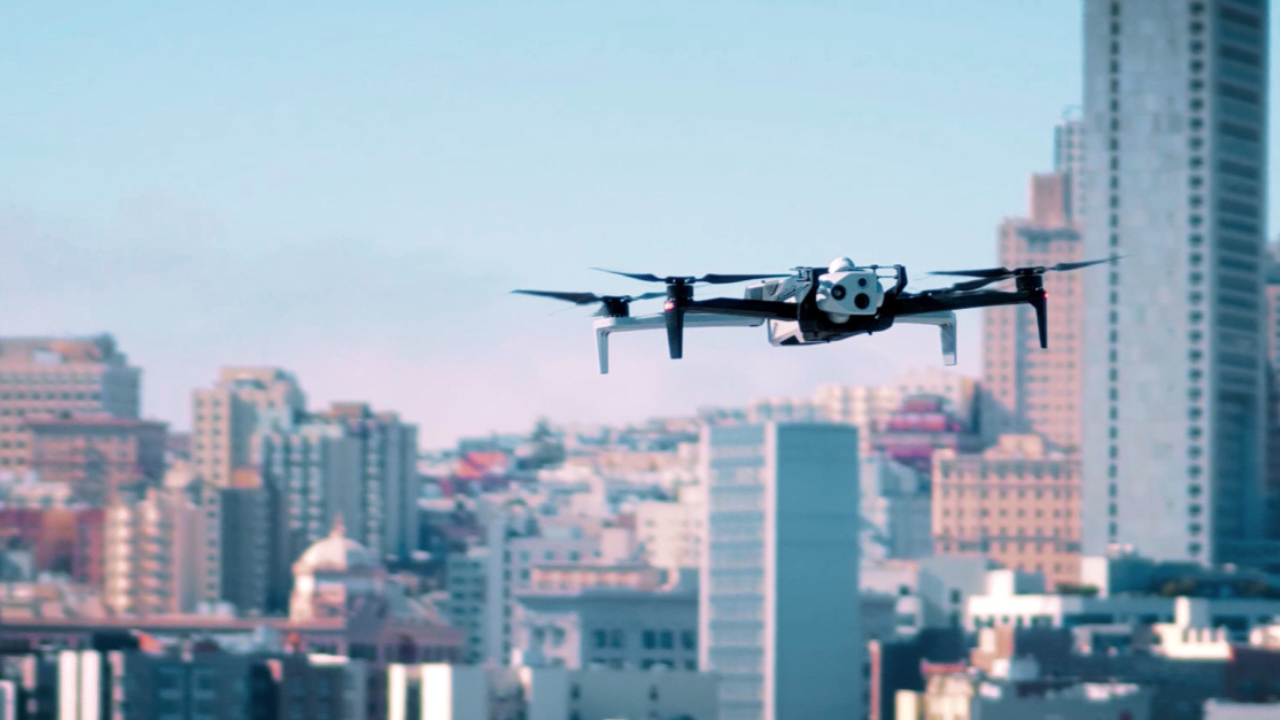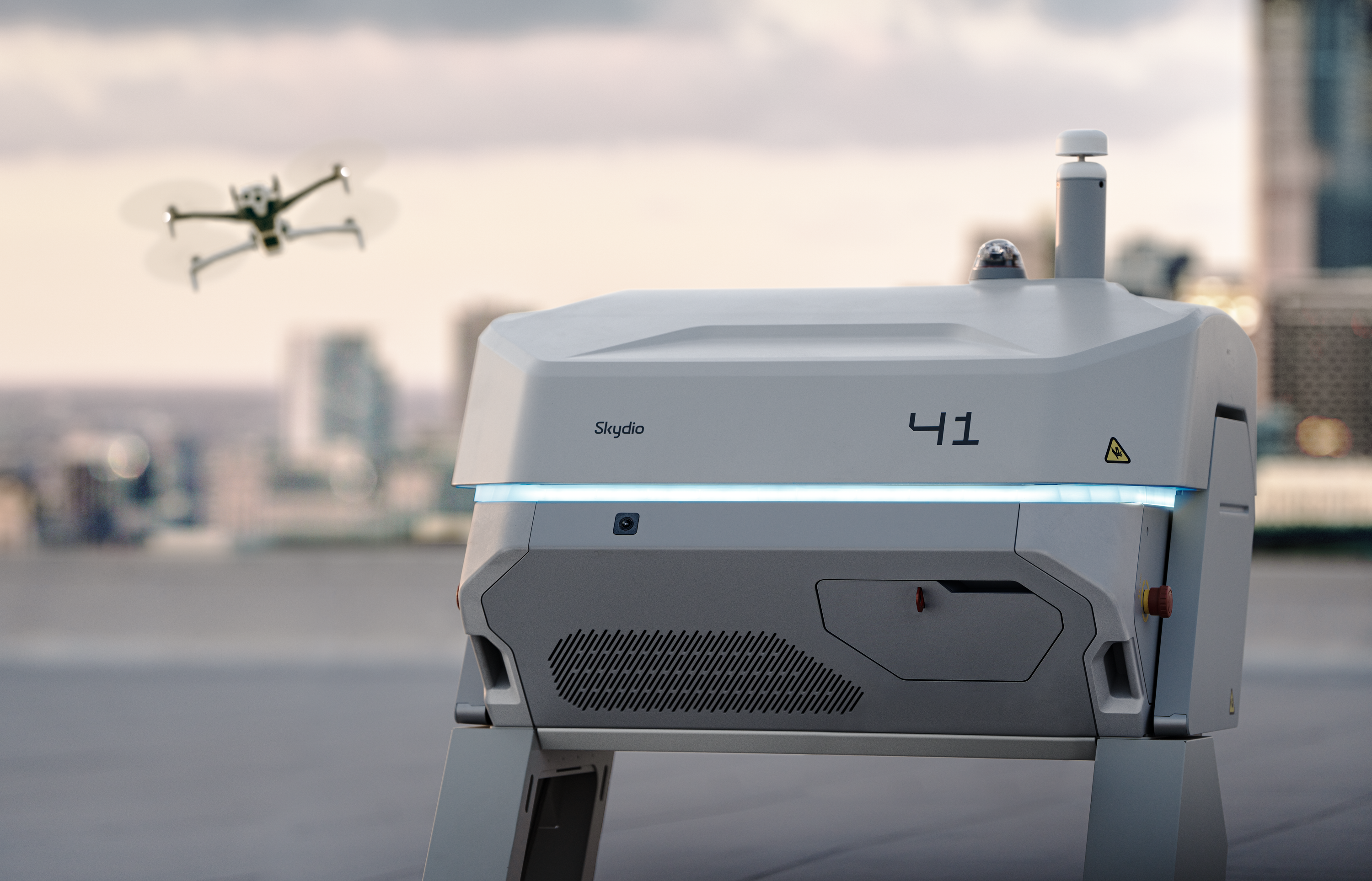Pushing the Limits of Drones with Skydio Autonomy

The following blog was created jointly by Qualcomm and Skydio, and was recently published by Dev Singh on the Qualcomm Developer Network. See the original post here.
Drones hold the potential to touch a myriad of industries, unlock new business outcomes, and deliver countless benefits. This is especially true when legacy methods involve heavy equipment that can be costly, inefficient, and disruptive or involve dangerous activities that can put professionals' lives at risk (e.g., industrial inspectors or first responders). Drone technology is continuously evolving, with a range of aircraft and sensors driving an opportunity that is forecasted to be worth $42.8 billion by 2025
Despite advances, traditional drones still require highly trained pilots to safely fly them around obstacles while fulfilling the goals of a flight session (e.g., to film a specific object or area). Drone vendors try to compensate for the need to fly far away from obstacles by incorporating large cameras and zoom lenses. However, such hardware can raise costs, increase the vehicle's weight and mass, and reduce image quality while still not addressing the challenge of obstacle avoidance for safe flight.
Skydio, a leading U.S. drone manufacturer and world leader in autonomous flight, has taken a different approach with their drones. Using Skydio Autonomy, a breakthrough AI-driven software engine, Skydio's drones are designed to take the burden of safe flight from the pilot. Their drones carry six navigation cameras for 360° perception and a GPU that runs nine deep neural networks as part of the Autonomy engine. This combination allows the drones to see and understand their surroundings, plan a path through them, and avoid obstacles so the operator can get the job done faster and safer. The drones also feature advanced image capture technology powered by the Qualcomm® QCS605 SoC (system-on-chip), Qualcomm® QCA6174A SoC, and Qualcomm APQ8009 application processor.
In this blog, we'll take a closer look at how Skydio drones are pushing the limits in the skies with the help of SoCs from Qualcomm Technologies, Inc. (QTI).
Skydio technology
Autonomous flight is a key differentiator for Skydio, turning drones into useful, scalable, trusted tools that businesses can use and rely on every day. Their aircraft carry six 4K fisheye (https://en.wikipedia.org/wiki/Fisheye_lens) navigation cameras that see around the drone to support a full-fledged autonomy stack helping operators get the most out of every flight.
Skydio currently offers two drones. Their Skydio 2 drone is a small quadcopter that combines the Autonomy engine with a compact, lightweight airframe, making it intelligent, safe, and simple to operate.

Operators can choose from two devices (as shown in images below) to control the Skydio 2 drone:
- The Skydio Beacon is a first-of-its-kind hand-held GPS device that communicates with the drone to provide a fully-autonomous flight. The drone can then track the Beacon holder (e.g., a mountain biker carrying the Beacon in their pocket).
- The Skydio Controller consists of a gamepad-like device for controlling the drone. It includes a mount upon which a smartphone is placed to display video streamed from the drone.
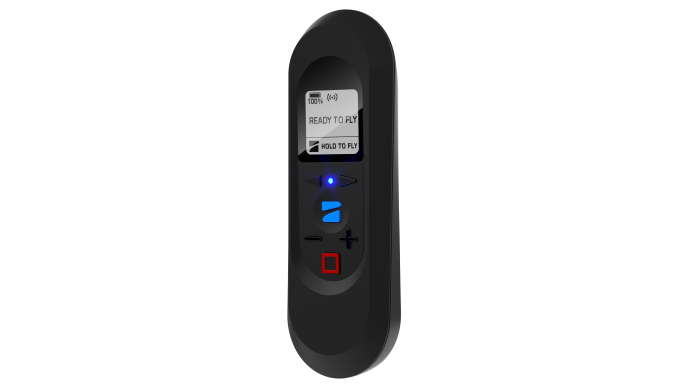
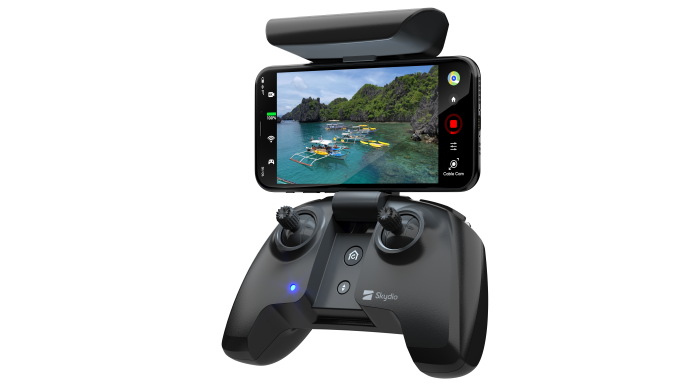
For more demanding use cases, the Skydio X2 (image below and available for pre-order now is a mid-sized drone that pairs autonomy with a ruggedized airframe made from magnesium and carbon fiber composites and foldable arms for easy pack-and-go transportation. Skydio X2 is also equipped with 12MP color and 320x256 FLIR thermal sensors.
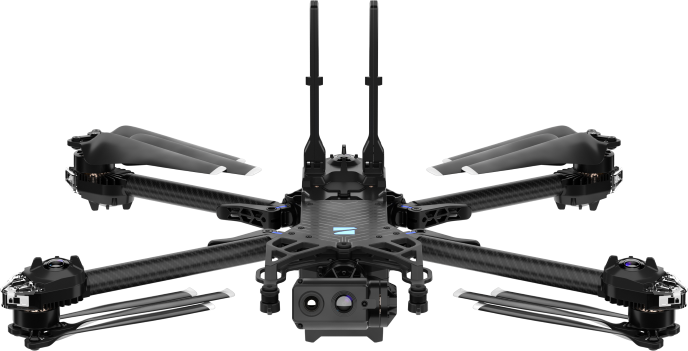
The Skydio X2 pairs with the Skydio Enterprise Controller for ground control. The Enterprise Controller was designed from the ground up for pilots with demanding operating requirements and has ground control software via the Skydio Enterprise App.
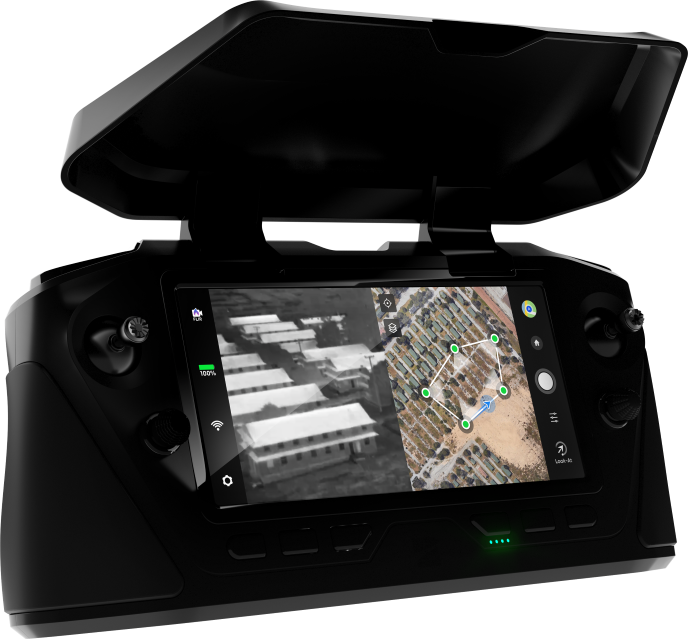
Skydio also offers advanced AI features that can be layered on the drone to address specific use cases. Skydio Autonomy Enterprise Foundation is a suite of AI-pilot assistance capabilities to increase situational awareness and increase flight control in complex environments. Meanwhile, Skydio 3D Scan is an autonomous scanning software to fully automate the photogrammetry capture process necessary for 3D models.
Use cases
Skydio drones provide numerous benefits for different customer segments and use cases such as:
Consumer: operators can perform flight maneuvers that even expert pilots would not attempt with other drones. Users can focus on what they are doing – riding a mountain bike, shredding snow, or lining up the perfect sunset shot – while the drone that follows you does the flying.
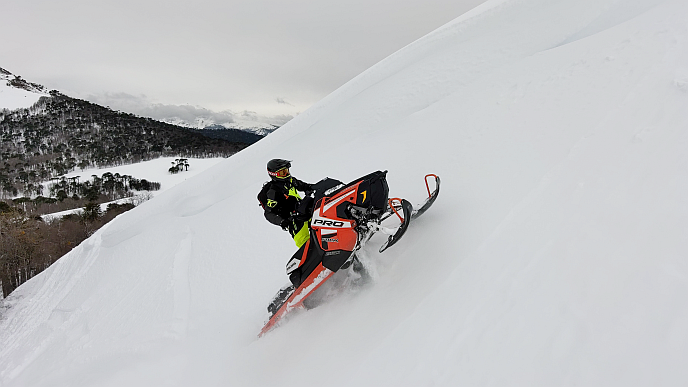
Enterprise: inspection of critical infrastructure with autonomous drones can help reduce the need for expensive equipment or worker exposure while dramatically increasing data capture efficiency compared to manual drones.
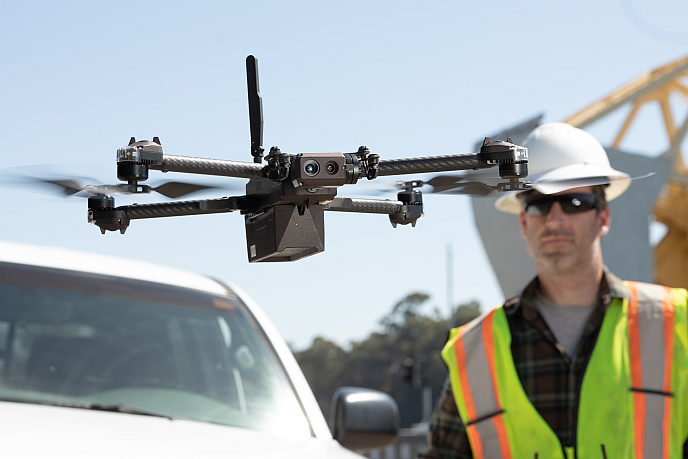
Public Safety: public safety operators can gain tactical situational awareness on emergency response, search and rescue, or firefighting missions. By using autonomous first responder drones, they can focus on the mission, increasing safety for first responders.
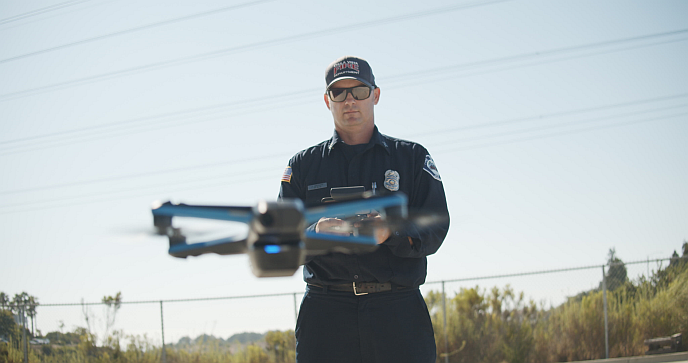
Defense: defense units can conduct organic Intelligence, Surveillance and Reconnaissance (ISR) missions, while reducing cognitive overload on the operators. Thanks to AI-pilot assistance, pilots can focus on the mission instead of operating the tactical drone. By sourcing their core processors from U.S. companies like QTI, Skydio can offer the highest standards of supply chain and manufacturing security (e.g., their defense and enterprise products comply with the rigorous supply chain requirements of the U.S. Department of Defense.
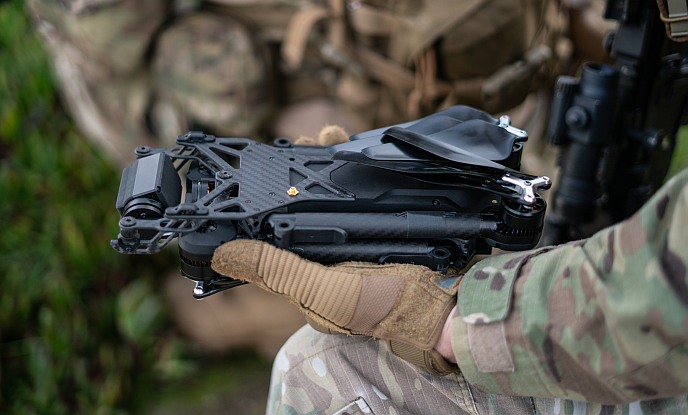
Skydio worked closely with QTI to develop key architectural functionality. For the primary camera system, Skydio used the QCS605 SoC (Vision Intelligence Platform) along with the IMX577 sensor. This system is designed to provide 4K video and up to 60fps with HDR for best-in-class image quality with multiple concurrent high-bitrate compressed streams, low-latency preview, and low-resolution uncompressed streams. This image quality was achieved through close collaboration between QTI and Skydio to develop advanced features and iteratively improve quality throughout the development cycle with our image processors. The drones are also equipped with the QCA6174A SoC to provide Wi-Fi communication to the Controller and Beacon.
The Skydio 2 Controller and Beacon both use the APQ8009 application processor to handle their respective application logic and to provide wireless communications with the drones. Using the APQ8009, Skydio was able to take advantage of the Qualcomm® Kryo™ CPU, Qualcomm® Adreno™ GPU, Qualcomm® Hexagon™ DSP, and Qualcomm Spectra™ ISPs while providing communications with the drone.
Conclusion
As we've seen in this blog, the sky is the limit for drones, thanks to advances in mobile technology. And through the collaboration between Skydio and QTI to incorporate technologies like our QCS605, QCA7174A, and APQ8009, drone flight is becoming easier and safer while expanding the horizon for new uses cases.
